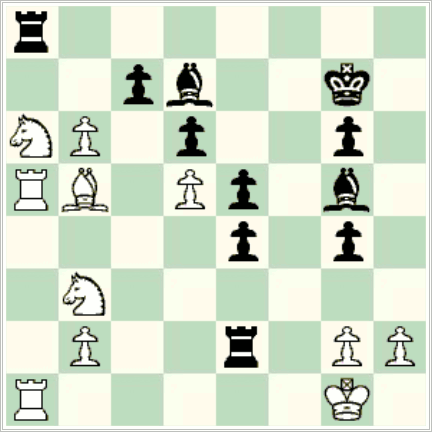In his post “Karpov-Moles, Groningen 1967-8”, from 2014, David McAlister discovered surprising and long-overlooked resources for John Moles in his game against Anatoly Karpov, Groningen 1967-68, played fifty years ago this month. His most startling discovery was that Moles had a probable win as late as move 34.
The win was admittedly difficult to find, as it involved a position with just three pawns (including two sets of doubled pawns) against a full rook. And even then, while best play leads to a large advantage for Black, per engines, there remain some significant obstacles to convert that to a win.
Subsequently Tony Doyle found a more direct improvement, and this time there can be no doubt. From the diagrammed position, play continued 29… Be3+ 30. Kh1 Bxb5 31. b7 Rh8 32. b8=Q Rxb8 33. Nxb8.

Position after 29. cxb6
But instead Moles had a forced win via the immediate 29… Bxb5!. The key difference compared to the game is that after 30. b7 Rf8! 31. b8=Q Rff2, White is mated. In the game continuation the check on e3 had the effect, via forcing the king to h1, of inadvertently clearing g1 for the rook to come over and defend.
There are other possibilities but as Tony puts it, “all the other winning variations are straightforward enough and are all based on the irreparable back rank weakness of White”: 30. Rxb5 Be3+ 31. Kh1 g3! or 31… Rxa6, or 30. Nxc7 Be3+ 31. Kh1 Rh8 32. Ra8 Rxa8 33. Nxa8 Ba6! 34. Nc7 Rxb2.
A very rich and complex game!
